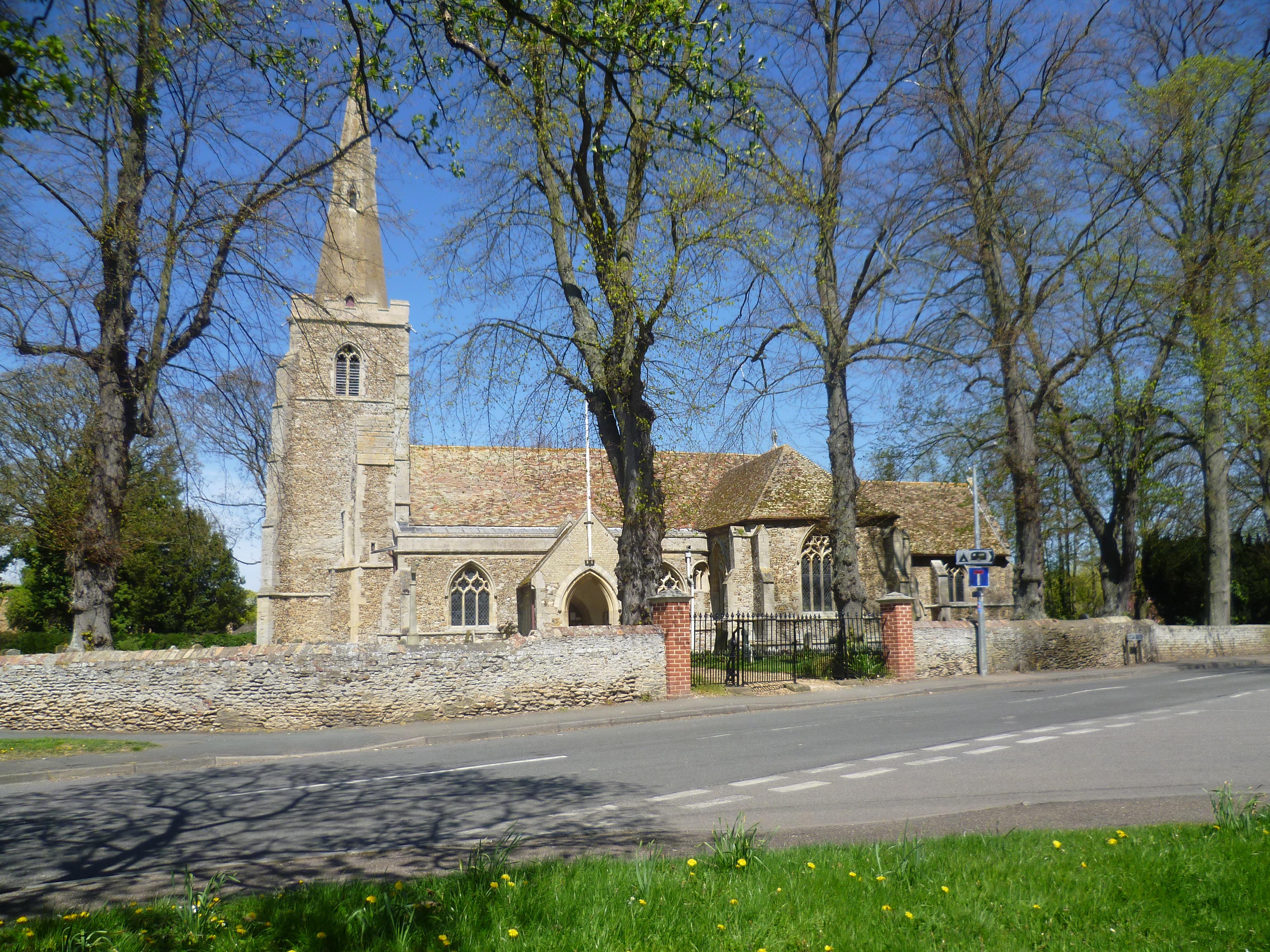St Michael
Long Stanton, Cambridgeshire
A trend setting thatched church.

The first known reference to the village is in 1070 as Stantona, an enclosed settlement of stoney ground.
Longstanton, Cambridgeshire
St Michaels, the older of the two existing churches, was built around 1230 and is notable for its thatched roof. The present All Saints Church dates from the mid fourteenth century and was built to replace an earlier church on the same site that was destroyed by fire.
The first known Lord of the Manor of All Saints was named Cheyne. The village has many indications of the impact of the Hatton family, who were Lord of the Manor from the sixteenth century to 1812. The village sign, erected in 1981 to mark the marriage of the Prince of Wales, features a golden hind, from the crest of the Hatton's.
The name of Sir Francis Drake's ship, in which he sailed around the world, was changed from 'Pelican' to the 'Golden Hind' in recognition of the patronage of Sir Christopher Hatton, Chancellor to Queen Elizabeth I, who was cousin to John Hatton, Lord of the Manor of All Saints. Sir Thomas Hatton had a 22 acre park in the parish of All Saints surrounding his manor house, Hatton Park.
In 1938 Longstanton's association with the military started with the building of RAF Oakington. The Air Ministry annexed 353 of Longstanton's 2,800 acres for the airfield and the hangers, barracks and married quarters were built in Longstanton.
During the Second World War two bomber squadrons and Bomber Command were operated from the airfield. After the war it was used for transport and then training schools before being handed over to the Army in 1973 and being renamed Oakington Barracks.
In 1999 the Army left Oakington Barracks and the village population dropped substantially until the married quarters were ultimately sold off. Some of the buildings that were part of the secure area of the Barracks are currently in use as an Immigration reception Centre, although the Government has announced the eventual closure of this site prior to the redevelopment of the whole site.
Long Stanton, Cambridgeshire
A trend setting thatched church.
Willingham, Cambridgeshire
The Fenland village of Willingham owes its exceptionally interesting church partly to its location on a medieval processional route.
Over, Cambridgeshire
The immensely tall and elegant 14th century spire of St Mary’s beckons across the Fens: no one with an interest in church architecture should ignore it.